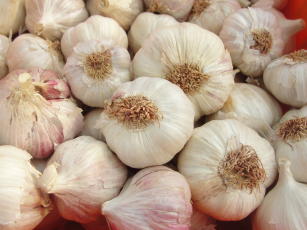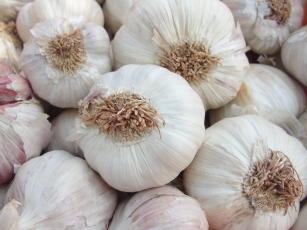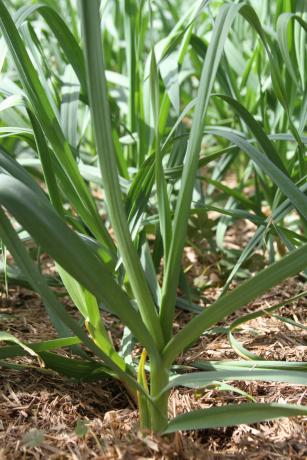Virus-free garlic: from research to reality
Virus-free garlic: from research to reality

Photo: RODRIGUES, Paula
Garlic cultivation has a major social impact, generating four direct and four indirect jobs per hectare planted in the production chain. More than 60% of Brazilian garlic production is in family-based properties. Since 2004, as planted area has been reduced to an average of 8,000 hectares, there was an estimated loss of 24,000 direct posts. In 2008, Brazil imported a volume equivalent to the production of 15,000 hectares, corresponding to 130,000 jobs outside Brazil. There has been a significant negative correlation between garlic imports and planted area in Brazil since the following year. Brazilian garlic growers could meet such demand. Even during the crisis, the sector recorded a productivity increase from 2.3 tons per hectare in 1961, to 9 tons per hectare in 2008, as a result of Brazilian producer's technological competence. The links between the State (through public policy), farmers (by improving product quality) and research (by enabling new technologies) can stimulate domestic production and consumption and serve niche markets abroad.
In this field, a research project initiated at Embrapa in 1992, in close collaboration with the University of Brasilia, has achieved a result that may change this scenario: It developed garlic virus cleaning technology. A production system based on this seed was validated afterwards. Just by replacing the seed, it was possible to simultaneously double the production and improve the quality of the bulbs produced. Virus-free garlic technology is now the technology that has had the largest positive impact on the garlic production system over a 15-year horizon.
In this field, a research project initiated at Embrapa in 1992, in close collaboration with the University of Brasilia, has achieved a result that may change this scenario: It developed garlic virus cleaning technology. A production system based on this seed was validated afterwards. Just by replacing the seed, it was possible to simultaneously double the production and improve the quality of the bulbs produced. Virus-free garlic technology is now the technology that has had the largest positive impact on the garlic production system over a 15-year horizon.
Ecosystem: Extreme South, Atlantic Forest, Semi-mixed and seasonal forests, Cerrados Region, Pinheirais Region
Status: Completed Start date: Sun Nov 01 00:00:00 GMT-03:00 2009 Conclusion date: Thu Oct 31 00:00:00 GMT-03:00 2013
Head Unit: Embrapa Vegetables
Project leader: Francisco Vilela Resende
Contact: francisco.resende@embrapa.br
Keywords: afídeos, alho semente, telados, viroses
Related content
Technologies See more
Agricultural practice: For seed management, conservation and germination


